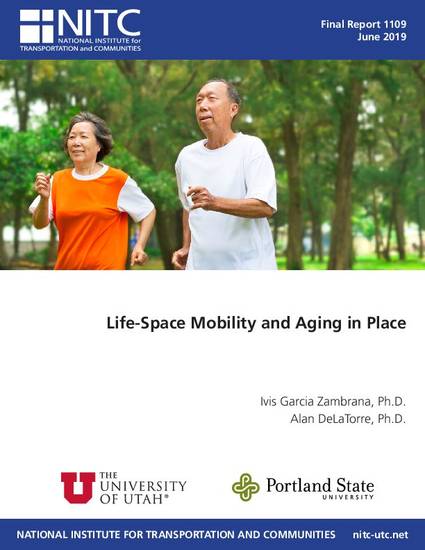
- Aging population,
- Older people -- Services for,
- Older people -- Transportation
Research on older adults explores the notion of “aging in place”—providing older adults the opportunity to continue to occupy familiar surroundings, to live in their own homes and communities. But oftentimes one’s ability to stay or leave, particularly in old age, depends on the built environment. Mobility is the ability to meet the basic needs to access goods, activities, services, and social interactions as they relate to quality of life. Thus, mobility is essential to older adults due to their limited, or gradually reducing, physical and cognitive abilities. In transportation research, mobility is often regarded in terms of travel behavior and it is measured by the number of outside-home travel. However, in other fields, including public health, it refers to the relative ease and freedom of movement in all of its forms. This study intends to broaden the understanding of the environmental factors on older adults’ mobility in different life spaces, from one’s bedroom to sidewalk, from home to a final destination via walking, public transit and/or driving. We document and examine 1) the ways in which older adults talk about, understand, and make meaning of their experiences and conditions related to life-space mobility and, 2) how these frames of reference guide their ability to be able to age in place. To achieve these aims, we developed a life-space mobility assessment tool and conduct semi-structured interviews with 25 older adults who have participated in home accessibility modification programs in the U.S. Western region. Given that interviewees already have engaged in some level of self-determination to improve their lives at home, we are interested in their life-space mobility and which opportunities they might see to improve their auto sufficiency. Our work provides both a basis and springboard for studying further geographies and discussion about policy initiatives to effectively and equitably address growing mobility disparities.

This is a final report, NITC-RR-1109, from the NITC program of TREC at Portland State University, and can be found online at: https://nitc.trec.pdx.edu/news/aging-place
The project brief associated with this research can be found at: https://archives.pdx.edu/ds/psu/29183
The webinar associated with this research can be found here: https://archives.pdx.edu/ds/psu/29181